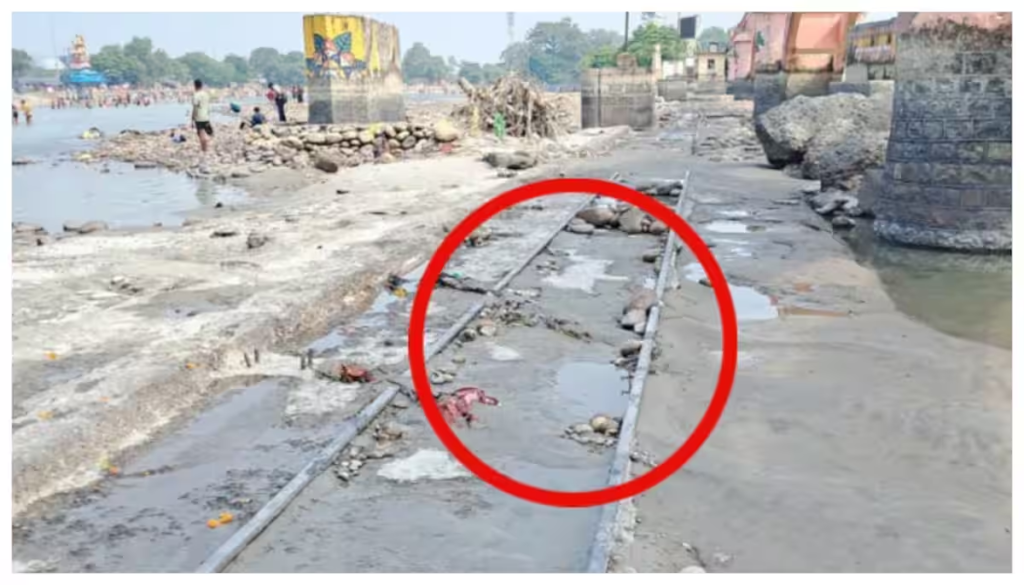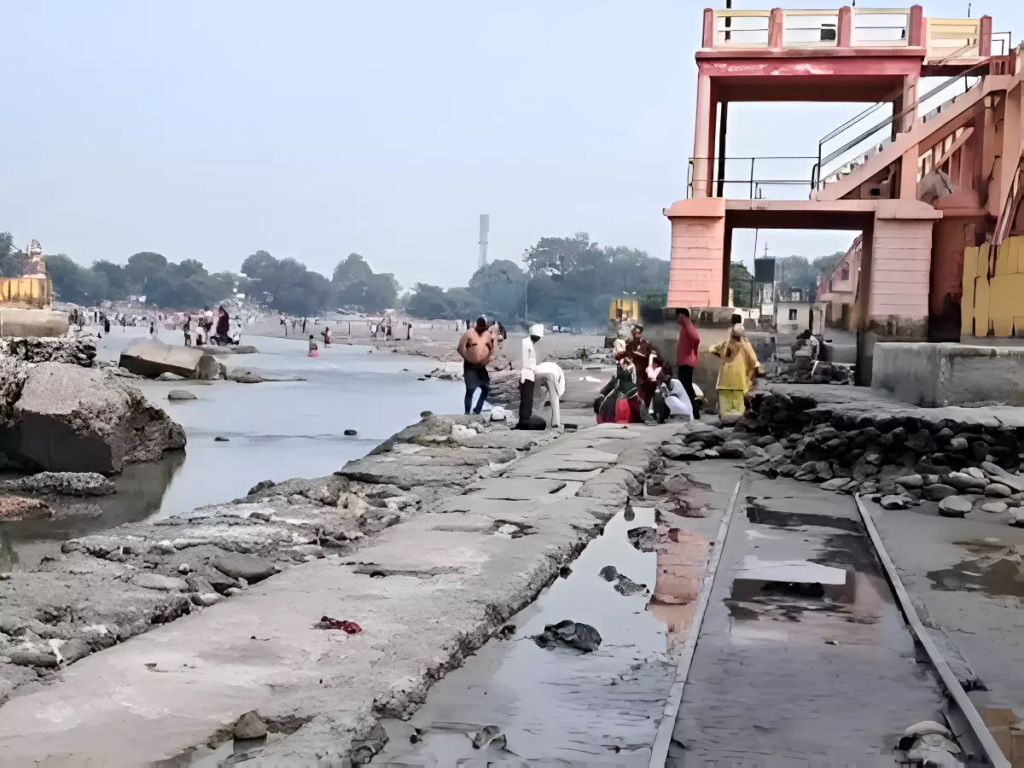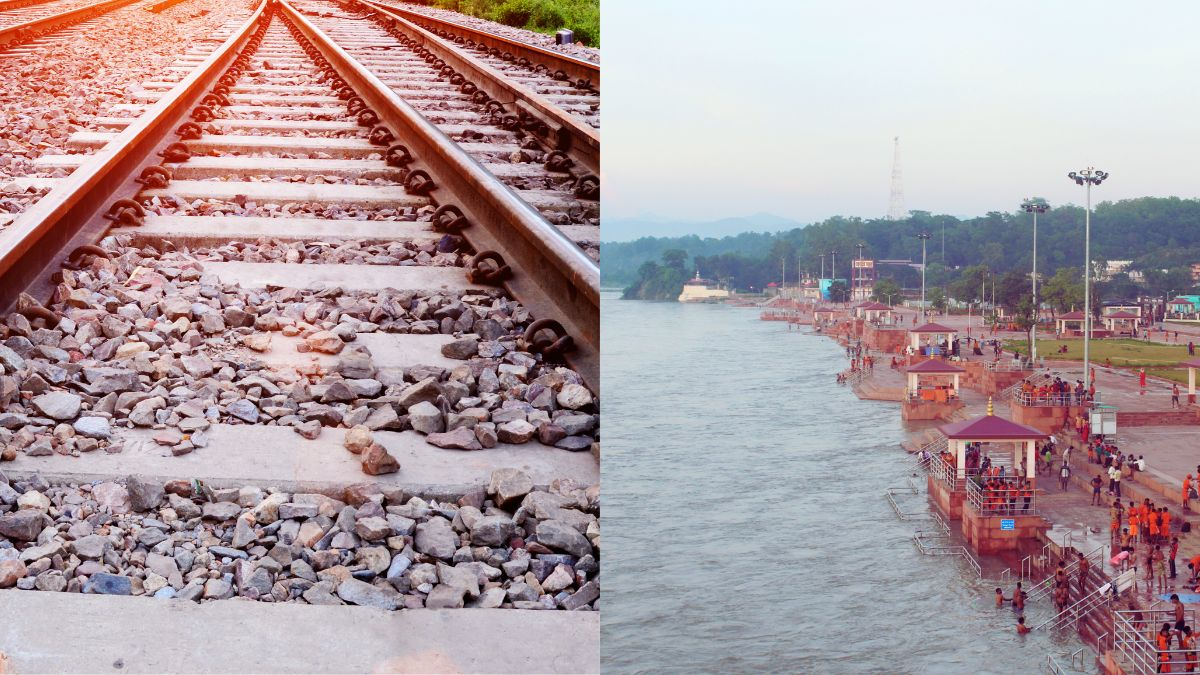British Period Railway Tracks Discovered Under the Ganga River in Uttar Pradesh During the annual Ganga Canal closure in Haridwar. A remarkable discovery was made that sheds light on the historical infrastructure of the region. Old railway tracks from the British period were uncovered beneath the Ganga River near Har Ki Pauri, causing a stir among locals and historians alike.
The discovery has sparked curiosity about the purpose of these tracks and their connection to the construction of the Ganga Canal, which dates back to the 1850s.
The Discovery of British Period Railway Tracks Under the Ganga River
The recent uncovering of old railway tracks beneath the Ganga River at Har Ki Pauri has left residents of Haridwar both surprised and intrigued. The tracks were discovered a few kilometers away from the current Haridwar Railway Station during the annual closure of the Ganga Canal, which is carried out for maintenance and cleaning purposes.
This closure is a routine event managed by the Uttar Pradesh Irrigation Department and usually takes place between Dussehra and Diwali. However, this year’s closure revealed something quite unexpected—the remnants of an old railway system that had long been hidden beneath the waters of the Ganga.
Read : CM Yogi Adityanath Batting While Attending Tournament in Lucknow: Watch
The discovery of these tracks has led to numerous questions about their origin and purpose. Some local residents, along with history experts, have speculated that the tracks might date back to the British period, when the Ganga Canal was constructed under the direction of Lord Dalhousie, the then-Governor General of India.
Read : Ganga: The Eternal Flow – Spiritual and Cultural Essence of India’s most Sacred River
This canal, completed in the 1850s, was an ambitious project aimed at improving irrigation and transportation in northern India. The tracks found under the river appear to have played a role in this construction, potentially being used to transport construction materials and for inspection purposes during the development of the canal and its associated infrastructure.
The Historical Context: The Ganga Canal and British Engineering
The Ganga Canal, constructed in the mid-19th century, was one of the most significant engineering projects undertaken during British rule in India. Stretching over 500 kilometers, the canal was designed to irrigate large areas of present-day Uttar Pradesh and Uttarakhand, transforming the agricultural landscape of the region.
Its construction was driven by a combination of economic and political motives, as the British sought to increase the productivity of the land and secure their control over the local economy.
The project was spearheaded by Lord Dalhousie, who saw the canal as a means to modernize India’s agricultural practices and generate revenue for the colonial administration. The canal not only provided irrigation for farming but also served as a major transportation route for goods.
During its construction, British engineers employed a range of innovative techniques to overcome the challenges posed by the region’s geography, including the use of railway tracks to facilitate the movement of materials and workers across the construction site.

According to local historians and experts like Professor Dr. Sanjay Maheshwari, it is believed that handcarts or small railcars were used on these tracks to transport construction materials, such as stone, timber, and iron, necessary for the building of the canal’s embankments and dams.
After the canal was completed, these tracks may have been repurposed for inspection and maintenance work. The fact that these tracks were discovered under the Ganga River suggests that they were either submerged over time or deliberately covered as the river’s course shifted or as the canal system evolved.
The Annual Closure of the Ganga Canal and Its Significance
The annual closure of the Ganga Canal, during which the railway tracks were discovered, is a key part of maintaining the region’s water infrastructure. Managed by the Uttar Pradesh Irrigation Department, this closure occurs every year between Dussehra and Diwali, a period that spans a few weeks during the autumn season.
The purpose of the closure is to allow for extensive maintenance and cleaning of the canal, its tributaries, and the surrounding infrastructure, including the ghats, or riverbanks, that are central to religious and cultural activities in Haridwar.
During this period, the water flow through the canal is reduced or completely stopped, providing workers with an opportunity to clean the canal bed, repair any damages to the embankments, and ensure the proper functioning of the water system. This maintenance is critical for the continued operation of the canal, which remains a vital source of irrigation for agriculture in both Uttar Pradesh and Uttarakhand.
The closure also has a direct impact on water supply in the region. Many towns and villages rely on the Ganga Canal for their water needs, and during the closure, there is often a temporary reduction in the availability of water for domestic and agricultural use.

Despite this inconvenience, the annual maintenance is essential for preventing long-term issues that could arise from neglecting the canal’s infrastructure. The discovery of the railway tracks during this year’s closure has added a new layer of historical interest to the event, prompting further investigation into the canal’s construction and its connection to the British period railway system.
The discovery of British-era railway tracks beneath the Ganga River near Haridwar’s Har Ki Pauri has opened a fascinating window into India’s colonial past. These tracks, long buried and forgotten, offer a glimpse into the engineering feats of the 19th century and the role that railways played in the construction of the Ganga Canal.
While much remains to be uncovered about the exact purpose and extent of these tracks, their rediscovery has sparked a renewed interest in the history of the region and the infrastructure that shaped its development.
As experts and historians continue to study the site, the hope is that more information will emerge about how these tracks were used and what they reveal about the broader history of British engineering projects in India.
In the meantime, the annual closure of the Ganga Canal remains a critical part of preserving the canal’s legacy, ensuring that this vital waterway continues to serve the people of Uttar Pradesh and Uttarakhand for generations to come.
let’s enjoy few years on earth with peace and happiness….✍🏼🙏

